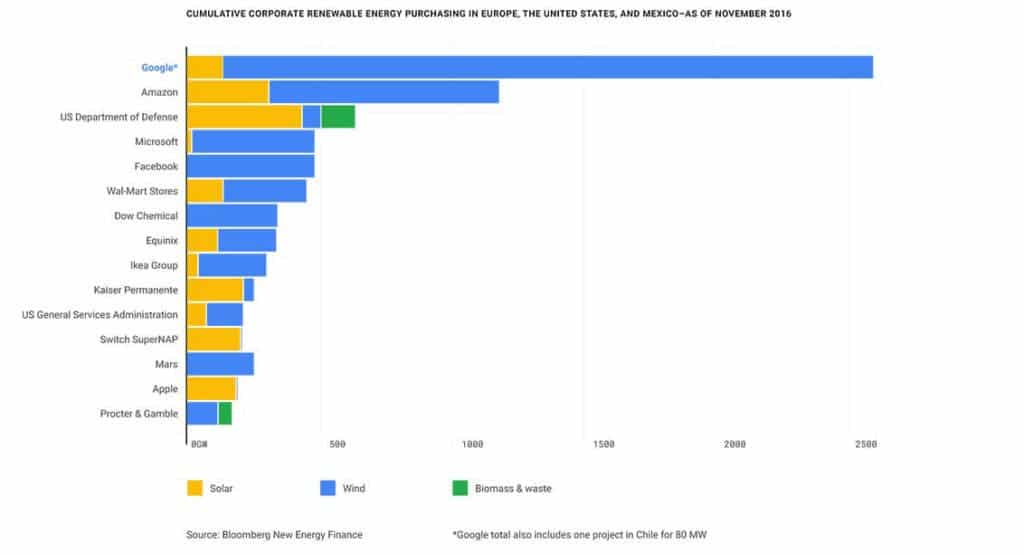Google is putting its money (and technology) where its mouth is. The internet giant invested over $3.5 billion in renewable energy infrastructure, managing to completely power itself through renewable energy.
Google has also taken steps to reduce their energy consumption, but no matter how you do things, data centers — the backbone of the internet — suck up a lot of power. If you can’t cut your energy consumption, the best thing to do is make sure that at least the energy is clean. In December 2016, just one year ago, Google announced that all the energy for its data centers will be sourced from renewables. Now, they’ve achieved that goal, after a contract was signed for three new wind power plants generating a total of 535 MW. The company tweeted about this milestone.
New clean energy purchases bring our total wind and solar capacity to over 3 gigawatts—enough renewables to match 100% of the energy it takes to run our products in 2017. pic.twitter.com/8ykaWO9LU0
— Google (@Google) November 30, 2017
They also released a more official press release, in which they describe the projects which enabled them to reach their objective. Google emphasized that its renewable projects support communities, from “Grady County, OK, to Rutherford County, NC, to the Atacama Region of Chile to municipalities in Sweden”. In the US, and most of the world, renewables are already starting to generate more jobs than their fossil counterparts. Jokingly, Google reminds us that they’re already generating more energy than it took to go back in time in the Back to the Future movies.
“I’m thrilled to announce that in 2017 Google will reach 100% renewable energy for our global operations — including both our data centers and offices. This is a huge milestone. We were one of the first corporations to create large-scale, long-term contracts to buy renewable energy directly; we signed our first agreement to purchase all the electricity from a 114-megawatt wind farm in Iowa, in 2010. Today, we are the world’s largest corporate buyer of renewable power, with commitments reaching 2.6 gigawatts (2,600 megawatts) of wind and solar energy. That’s bigger than many large utilities and more than twice as much as the 1.21 gigawatts it took to send Marty McFly back in time.”
Google’s decision isn’t only about having a positive impact on society, it also makes a lot of economic sense. The investments were motivated by continually decreasing costs of renewable energy, and the company says it will actually save money in the long run.
“We are convinced this is good for business, this is not about greenwashing. This is about locking in prices for us in the long term. Increasingly, renewable energy is the lowest cost option,” said Marc Oman, EU energy lead at Google. “Our founders are convinced climate change is a real, immediate threat, so we have to do our part.”
Google is the world’s largest corporate buyer of renewable energy, at just over 3.0 GW. That’s just about twice as much as the next leading corporation, Amazon, which generates around 1.5GW. Jeff Bezos showed off on one of his recent wind power installations, and he really does have reasons to be proud — 1.5GW is an impressive figure. The US Department of Defense, for instance, produces just over 0.5 GW.
It’s certainly encouraging to see companies stepping up their game, especially as the White House doesn’t seem interested in tackling climate change, despite the mountain of scientific evidence spelling urgency. Private companies have been buying more and more clean energy year after year, and several large corporations are already generating all or most of their energy from wind or solar. LEGO, for instance, achieved 100% renewable energy 3 years ahead of schedule.
“The science tells us that tackling climate change is an urgent global priority. We believe the private sector, in partnership with policy leaders, must take bold steps and that we can do so in a way that leads to growth and opportunity. And we have a responsibility to do so — to our users and the environment.”










